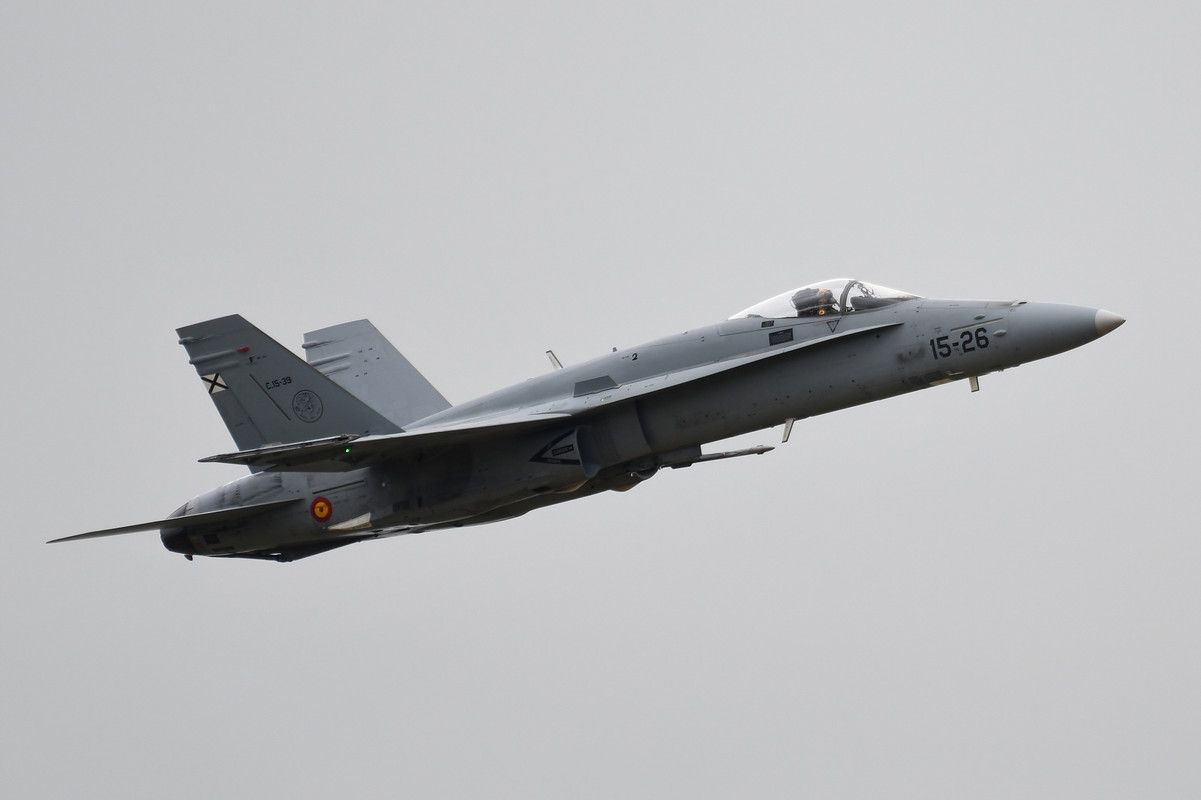
Spanish Air & Space Force Hornet Solo Display
About the Aircraft
The McDonnell Douglas F/A-18 Hornet is an all-weather supersonic, twin-engine, carrier-capable, multirole combat aircraft, designed as both a fighter and attack aircraft (hence the F/A designation). Designed by McDonnell Douglas and Northrop, the F/A-18 was derived from the latter's YF-17 in the 1970s for use by the United States Navy and Marine Corps. The Hornet is also used by the air forces of several other nations, and formerly by the U.S. Navy's Flight Demonstration Squadron, the Blue Angels.
Specifications
Crew
1 (C) / 2 (D)
Length
56 ft 1 in (17.1 m)
Wingspan
40 ft 4 in (12.3 m)
Height
15 ft 5 in (4.7 m)
Max Speed
1,034 kn (1,190 mph, 1,915 km/h)
Combat Range
400 nmi (460 mi, 740 km)
Service Ceiling
50,000 ft (15,000 m)
Fuel Capacity
10,860 lb (4,930 kg)
Historical Development
The F/A-18 Hornet entered operational service in 1983 and first saw combat action during the 1986 United States bombing of Libya and subsequently participated in the 1991 Gulf War and 2003 Iraq War. The F/A-18 Hornet served as the baseline for the Boeing F/A-18E/F Super Hornet, its larger, evolutionary redesign, which supplanted both the older Hornet and the F-14 Tomcat in the U.S. Navy.
Did You Know?
- The Hornet was designed to be a highly versatile aircraft due to its avionics, cockpit displays, and excellent aerodynamic characteristics.
- Its versatility and reliability have proven it to be a valuable carrier asset.
- The Hornet can perform various missions, including fighter escort, fleet air defense, and close air support.
- The aircraft is still in use with various air forces around the world, showcasing its enduring design.
Test Your Knowledge
Performer Information
The Spanish Air Force Hornet Solo Display showcases the McDonnell Douglas EF-18A+ Hornet in an exhilarating aerial performance that highlights the aircraft’s agility, speed, and power. A highly skilled display pilot executes very dynamic maneuvers. Unlike the Finnish or Swiss counterparts, which perform/perfromed more regularly throughout the year, the Spanish team participates in only a handful of displays annually, making their performances a special highlight at select airshows. This limited schedule not only emphasizes the exclusivity of their displays but also showcases the exceptional skill and training of the pilot, captivating audiences with a breathtaking exhibition of aviation excellence.














